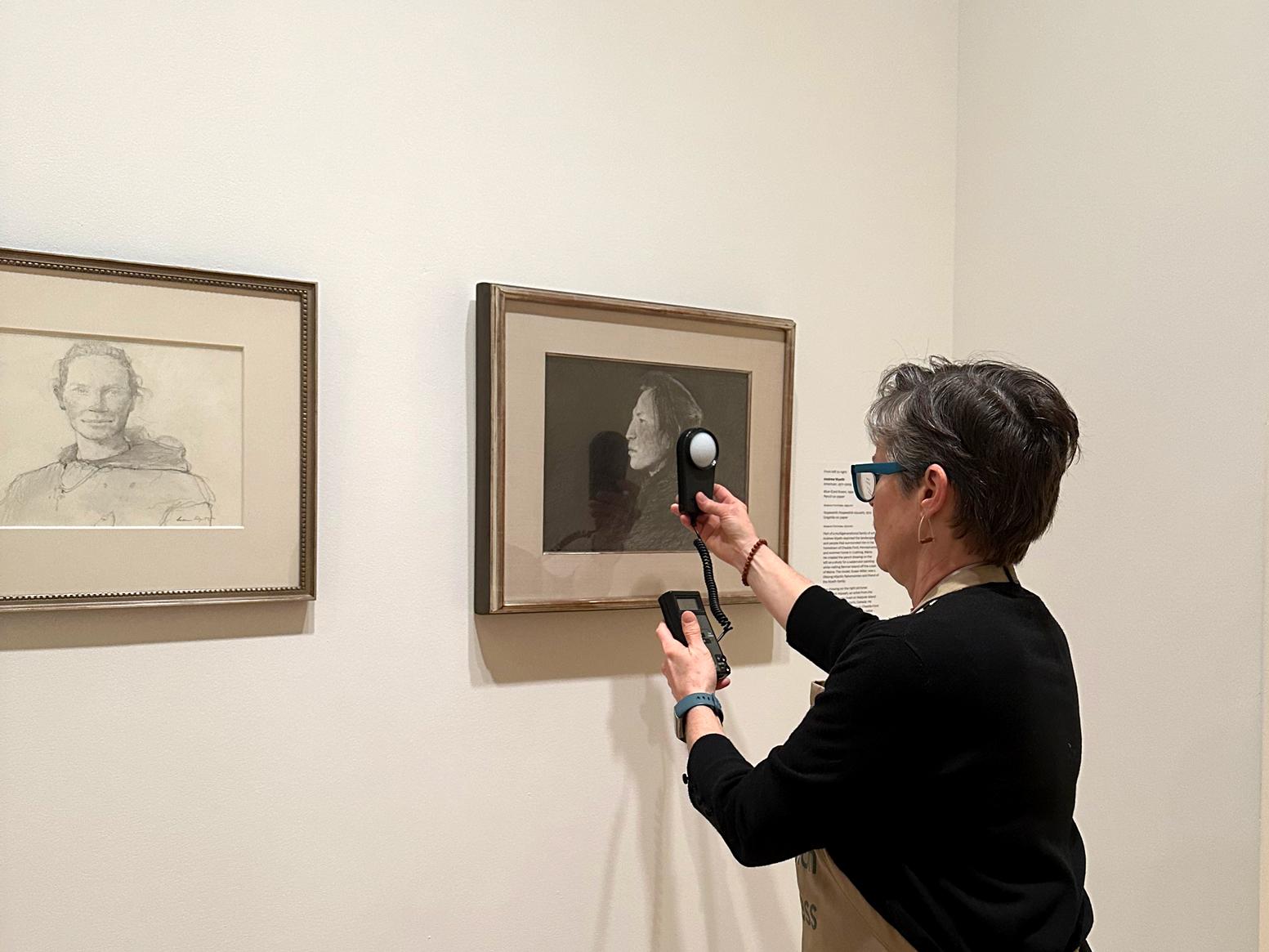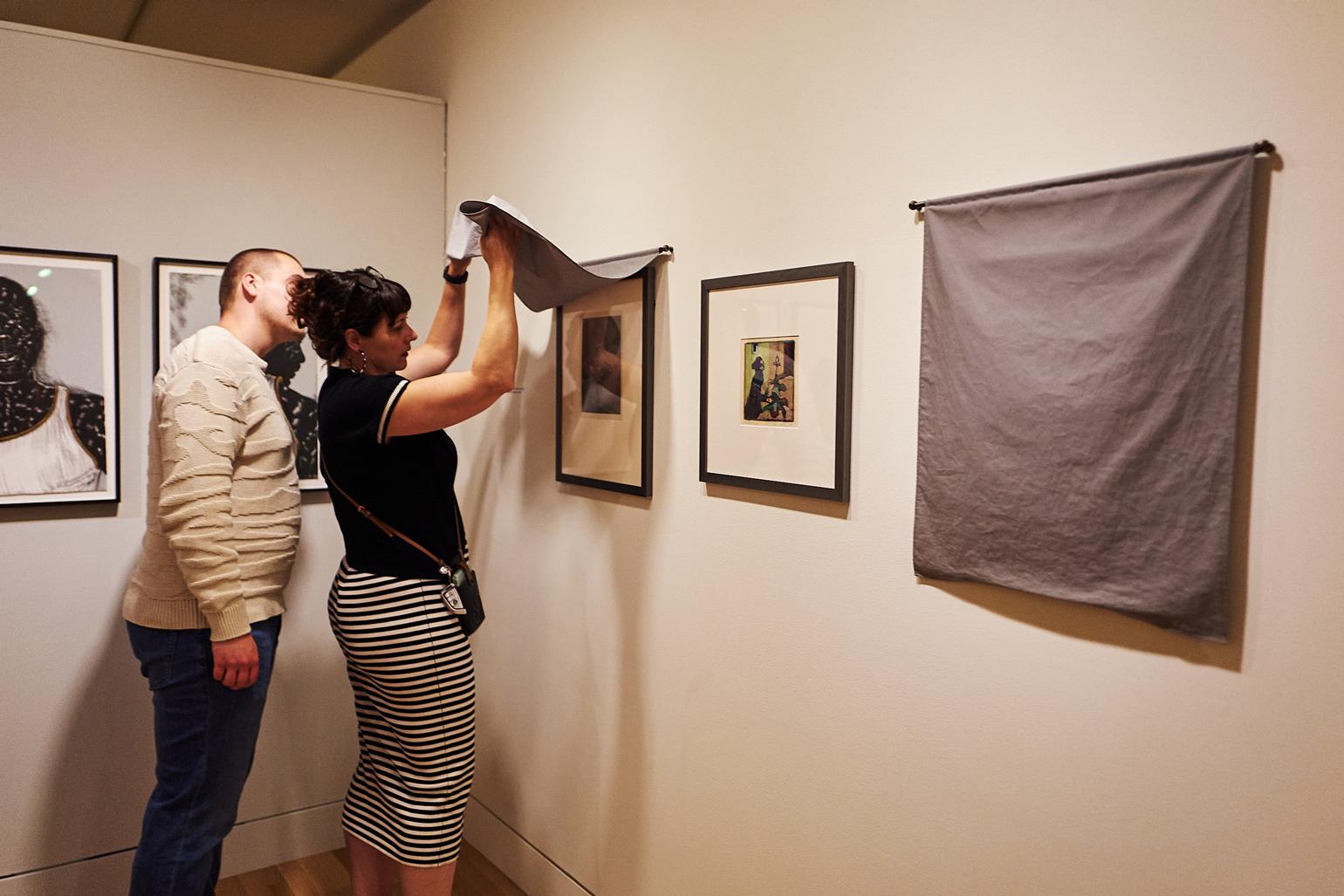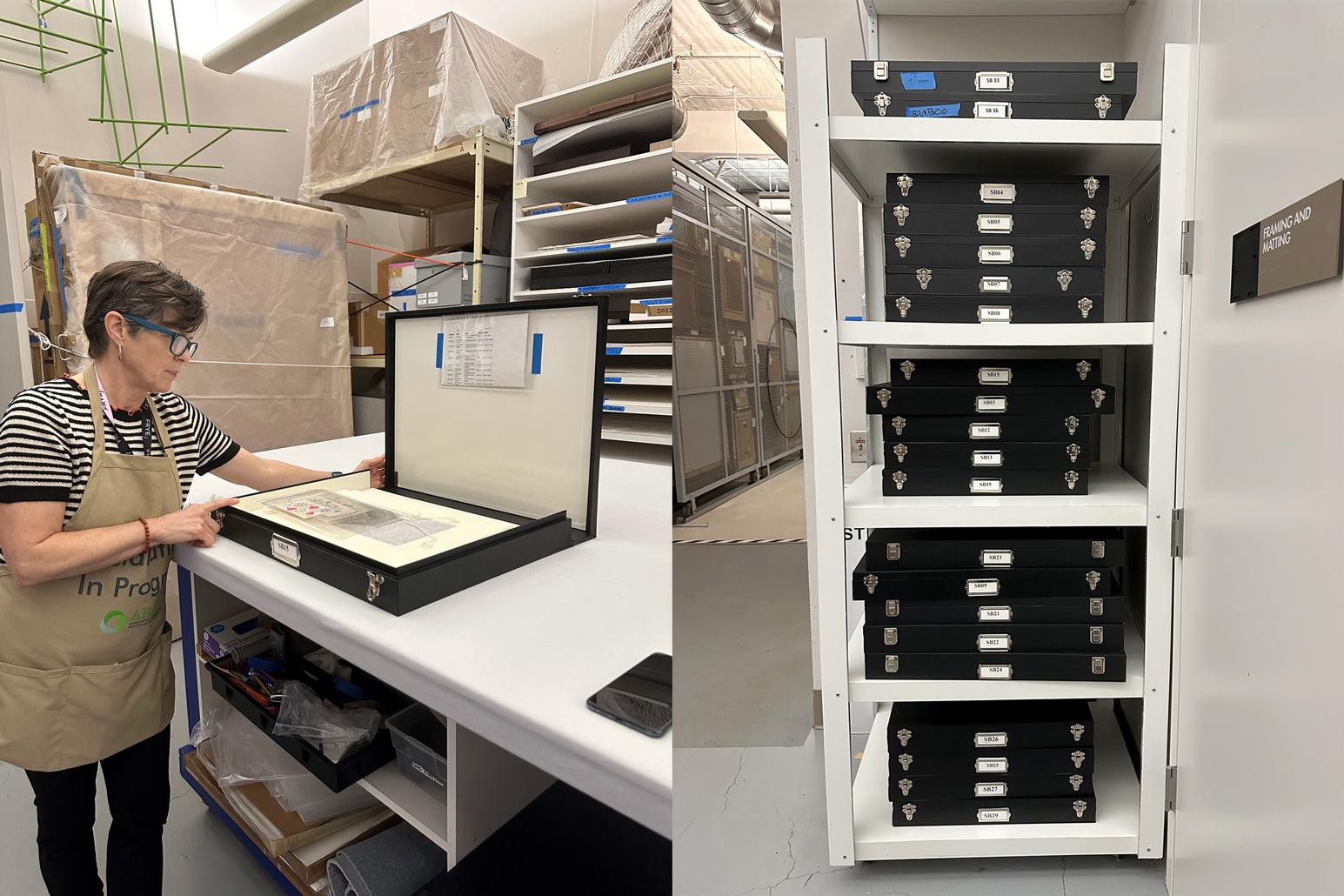By Rachel Townsend
The term “work on paper” refers to any artwork done on a paper support. This can include many different types of media including photographs, watercolors, charcoal drawings, pastels, etc. Into the Light: Works on Paper from the Collection gives visitors the opportunity to see a handful of the Frye’s nearly eight hundred artworks on paper, many of which have rarely or never been exhibited. The show’s first rotation of works included a broad range of mediums including pencil, pastel, and even mica glitter, while the current rotation is all watercolor paintings. The Frye’s former Head of Collections Cory Gooch took us behind the scenes so that we can all learn a little more about what is involved in caring for works on paper in perpetuity.
Works on paper are delicate primarily because of their paper support. Supports, like paper, that are hygroscopic, or can expand and contract with moisture, are more sensitive to degradation from light exposure. Keeping consistent temperature and relative humidity in both exhibition spaces and storage spaces helps to mitigate damage from swings between high and low humidity and temperatures. Damage from light exposure is cumulative over the lifetime of a work and irreversible. Museums must think long term about works on paper because of their high light sensitivity.

Light is measured by either increments of footcandles or lux. The two measurements are somewhat interchangeable: five footcandles is fifty lux. The museum tries to display works on paper at no higher than five footcandles, because of their higher sensitivity to light than other types of media. When this medium is on display, light levels are set and monitored accordingly. Light meters are tools used to measure the amount of light that falls on artworks. The Exhibitions Department sets and checks the lights in galleries after installation of new shows. They add filters for things like UV light, and they turn light levels down depending on the needs of the artworks.
Works on paper are generally framed and glazed for their protection. Glazing treatments were traditionally glass, but now most are plexiglass, which protects against UV light and offers advantages like non-glare surfaces. Works on paper usually have a mat when they are framed, which keeps the glazing from touching the surface of the actual artwork.

To protect works on paper, they are usually only on display for up to six months. When they are on public view for more than six months, a curtain or other cover can be hung over the work and moved by visitors to view the piece. Based on the way light exposure effects artwork, showing something for six months at five footcandles is the same as showing it for three months at ten footcandles.
Works on paper also have special considerations and handling for their storage. Some works on paper are stored in their frames, in vertical storage bins. In the bins, artworks are placed back-to-back and front-to-front to keep the hanging hardware facing each other rather than artwork. Most works are stored unframed with their mats in solander boxes, which come in many sizes. Solander boxes are hard-sided and keep out light, dust, and other contaminants when latched closed. An inventory list is included, and works are separated by acid-free tissue paper interleaving in each box. Lights are kept off in storage when not necessary and kept purposely low. Temperature and relative humidity are monitored with an eye toward consistency as well.


The preventative conservation of artworks is very important, and all the tactics mentioned here are efforts toward that end. Collections departments do so much to care for the works in museums’ collections, and the Frye is no exception. A big thank you to Cory Gooch for sharing her insights and knowledge with us, so we could all learn a bit more about what goes into caring for works on paper! Into the Light: Works on Paper from the Collection closes on March 10, 2024, so be sure to stop by soon to see it!